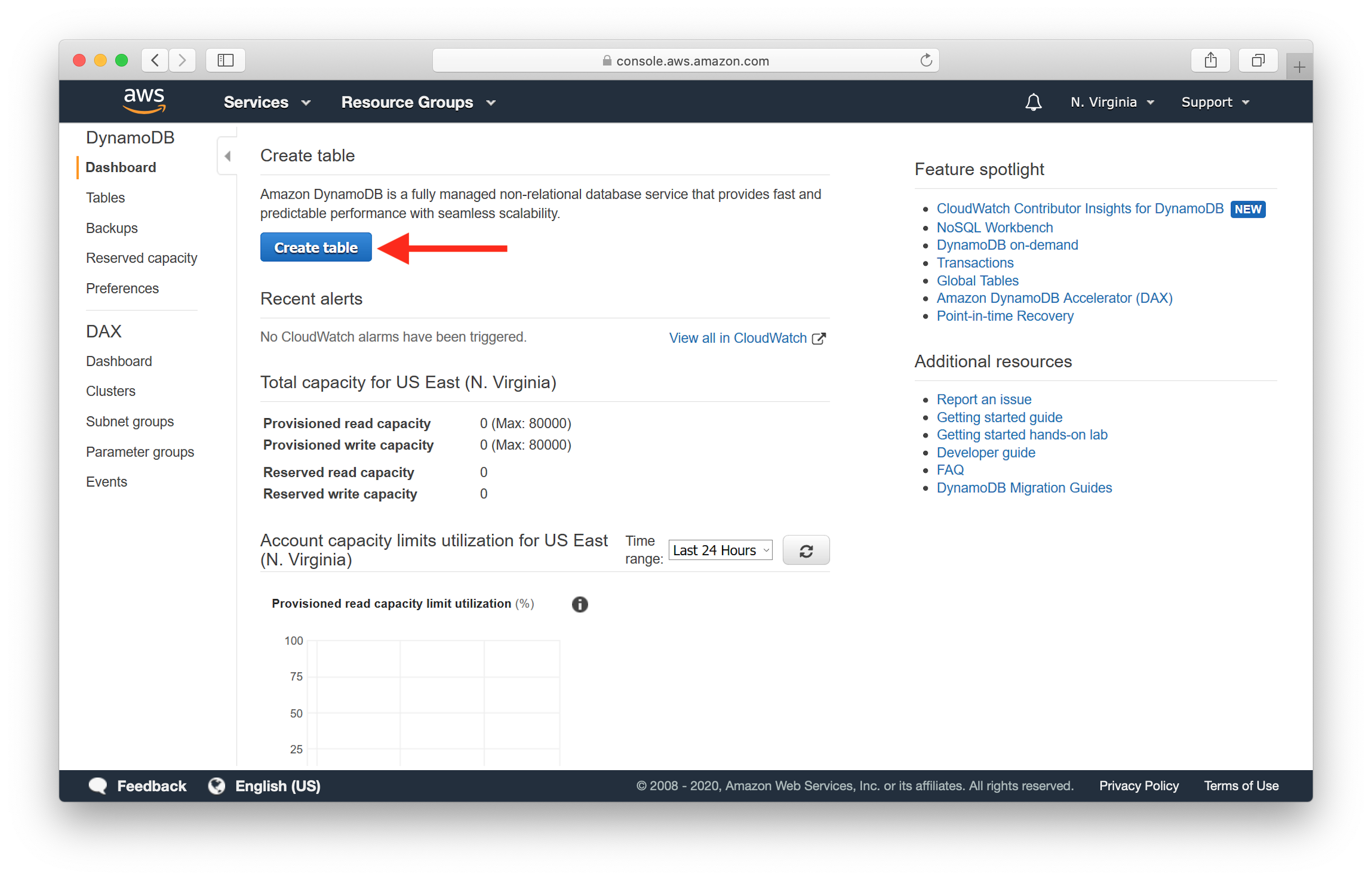

The first step is to create a table with a hash key. The actions would be the same as described in the corresponding Java tutorial. Local DynamoDB provides us with a web user interface on The local DynamoDB shell is a JavaScript shell, therefore the actions for Node.js can be issued straight to the DynamoDB shell. Using local DynamoDB and Node.js is extremely handy for debugging. Removing DynamoDB Local is pretty easy: Remove the dependencies, and any related setup that runs before executing the tests. If you use Docker, you can find a local DynamoDB image, or you can create one on you own as described here. It’s easy to delete a table in Amazon DynamoDB, and that means that it’s easy to delete one by accident, too.Fortunately, you can minimize the risk of accidentally deleting a table using AWS Identity and Access Management (IAM), which provides authentication and access control for DynamoDB.

There was a previous post on local DynamoDB. Edin Zulich, AWS NoSQL solutions architect.

Now we are good to go with a putitem, getitem and other operations on this freshly minted DynamoDb table.Before getting started, we need to have local DynamoDB installed since we want to avoid any costs for DynamoDB usage. The create table response is below indicating a successful table creation. We will be doing the following: Use Docker to provision a Local DynamoDB Server Create a DynamoDB Table with a Hash and. Below is an example of a create table CLI command. In this tutorial we will be using Amazons DynamoDB (DynamoDB Local) to host a sample dataset consisting of music data that I retrieved from the iTunes API, which we will be using the aws cli tools to interact with the data.
DELETE LOCAL DYNAMODB TABLE INSTALL
If you want to use versions after 0.2.26 make sure to execute the following command instead of sls dynamodb install: sls dynamodb install -localPath. We can now create a table on the local instance using the AWS CLI and specifying the endpoint URL to the local instance, in this case localhost:8000. yarn remove serverless-dynamodb-local yarn add serverless-dynamodb-local0.2.35 sls dynamodb install. Net core application to connect and perform CRUD operations.

From your terminal, change directory cd to the directory where you created the yaml file. We now have an instance of Dynamodb running locally and in the next post will use a. After you have created the yaml file from the previous step, we’re ready to spin up our local DynamoDB. Projection - Specifies attributes that are copied (projected) from the table into the. The attribute names in the key schema must be between 1 and 255 characters (inclusive).
DELETE LOCAL DYNAMODB TABLE HOW TO
KeySchema - Specifies the complete index key schema. js Query ExamplesThis cheat sheet should help you how to perform variefy of operations starting from simple queries ending with complex transactions using AWS DynamoDB. In order to check the list of tables, you have to enter the following command in the liver server.' aws dynamodb list-tables 'As soon as you enter this command, you’ll see the list of all the tables available on the live server. Note the –endpoint argument which specifies that the command should be run on the DynamoDb instance running on localhost at port 8000.Īws dynamodb list-tables –endpoint-url DynamoDb running locally IndexName - The name of the local secondary index. With the AWS CLI, I can use the list-tables command as below. From the side navigation, go to DynamoDB -> Tables -> YourTable. Navigate to the dashboard for your DynamoDB table. DynamoDB export works with LocalStack as well as with a real AWS account. You can export the entire table or just a current page of data. To test that the DynamoDb instance running locally I can use the list tables command, to list any tables in the DynamoDb docker instance. Commandeer allows you to export your data out of your table in the csv or json format. I'm trying to figure out how Dynamo handles conflict resolution in a global table when doing a transaction.Assuming I want to run a transaction that increments an atomic counter and writes out a. The container can be run in detached mode using the -d flag. The above command runs the container in interactive mode. I am using the docker run command to run DynamoDb locally and map the port 8000 on the container to the port 8000 on the host using the commandĭocker run -p 8000:8000 amazon/dynamodb-local The DynamoDb image exposes port 8000 and we can map it as necessary to a port on the host. Check the checkbox against the Delete this table text, and click on the Delete button: This. Once the DynamoDb image has been downloaded locally, we can run it using the Docker run command. Here, I have two tables in my DynamoDB console now, out of which I will delete a table called dummyProduct: Select a table to be deleted, and click on the Delete Table button: This will open up a pop-up window, which will ask you for your confirmation.


 0 kommentar(er)
0 kommentar(er)
